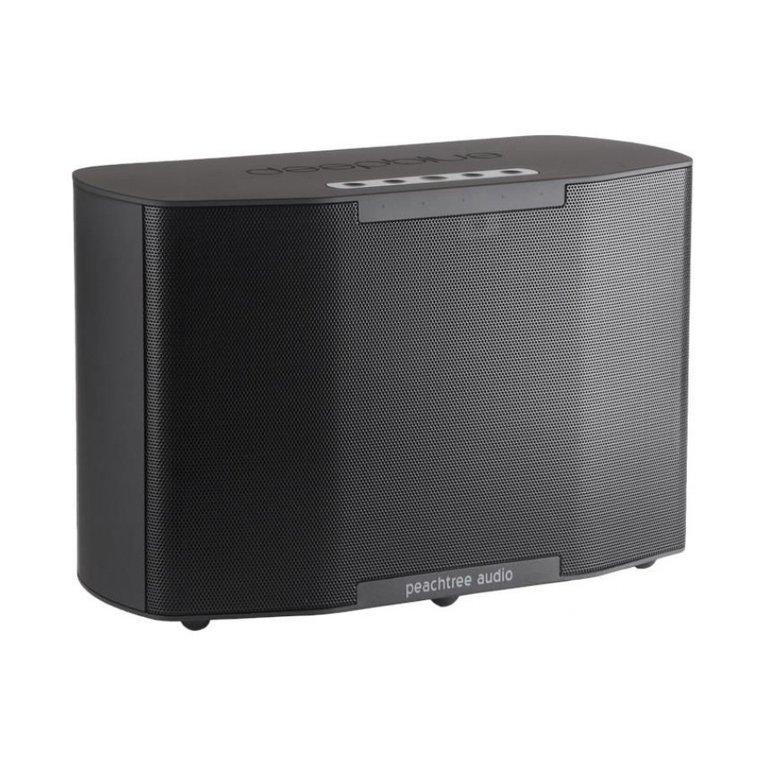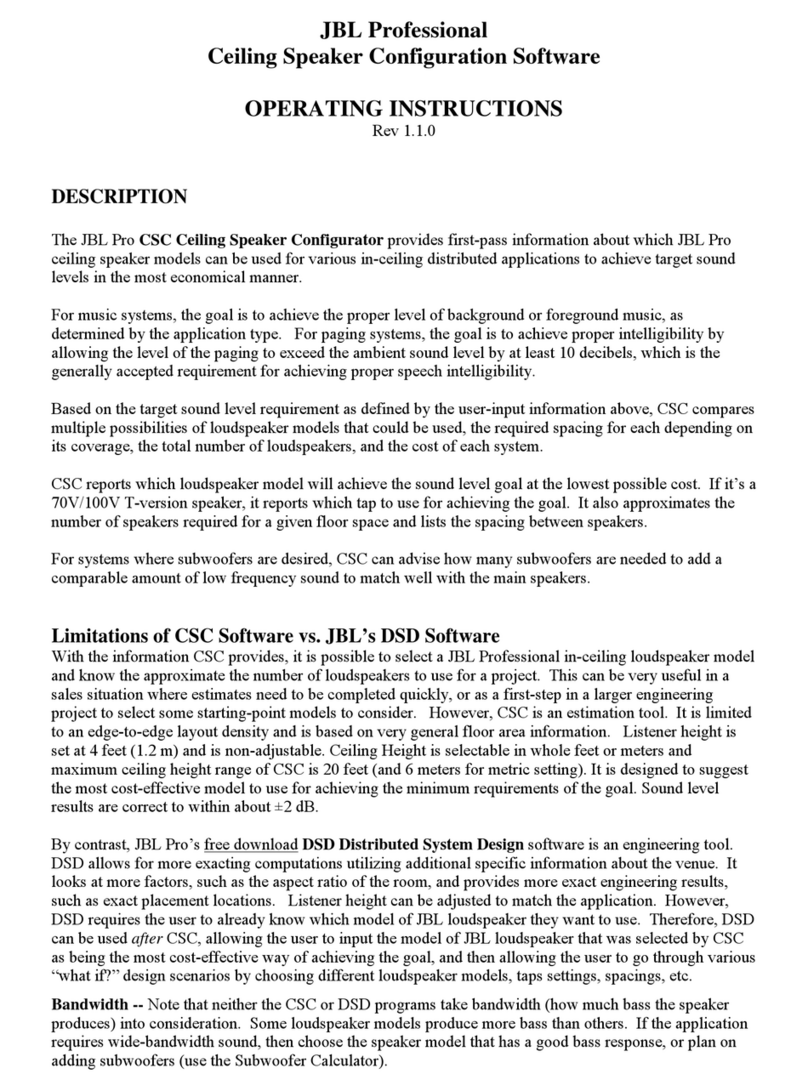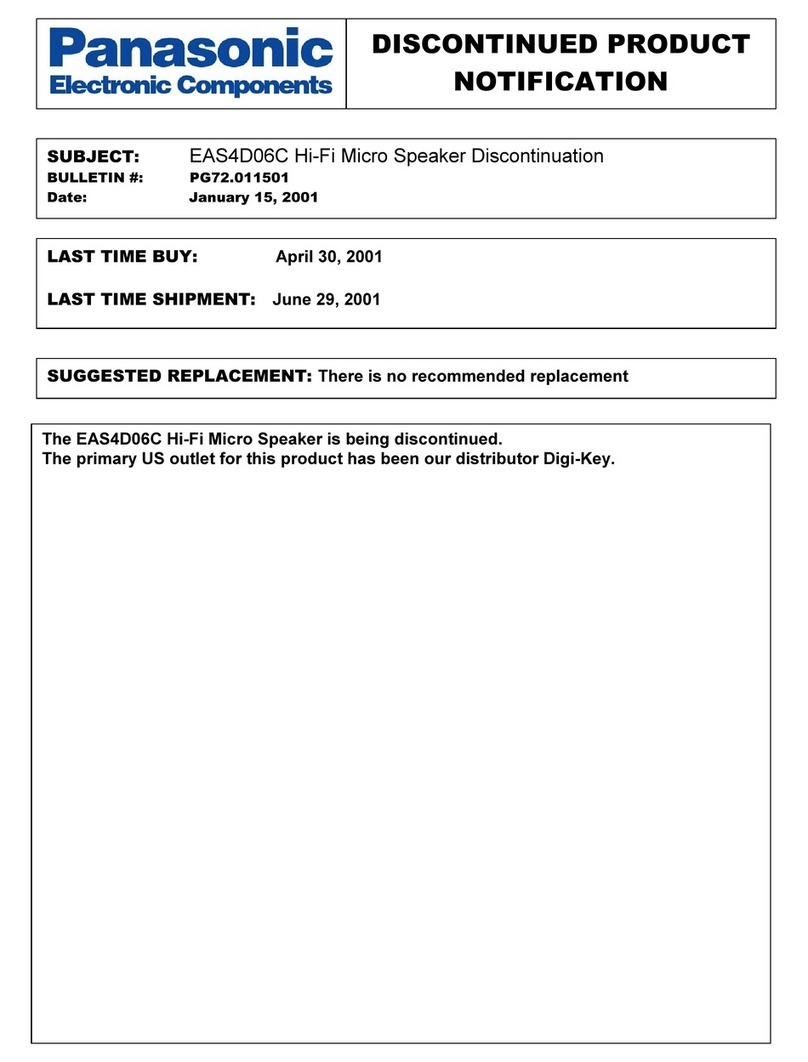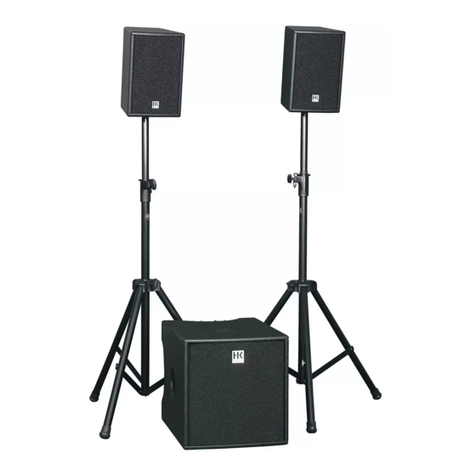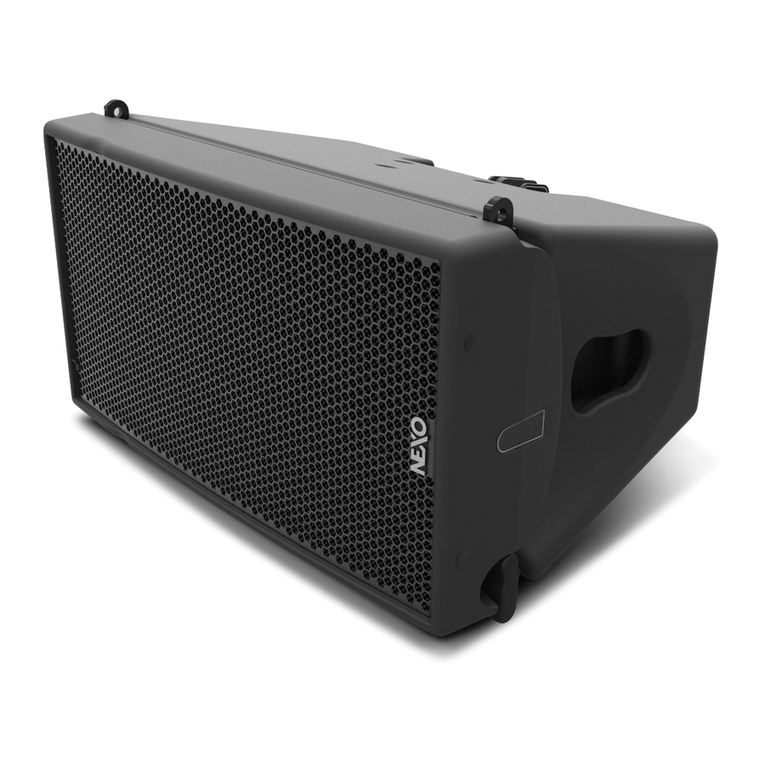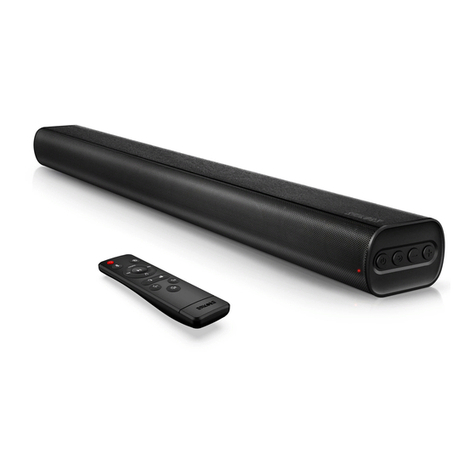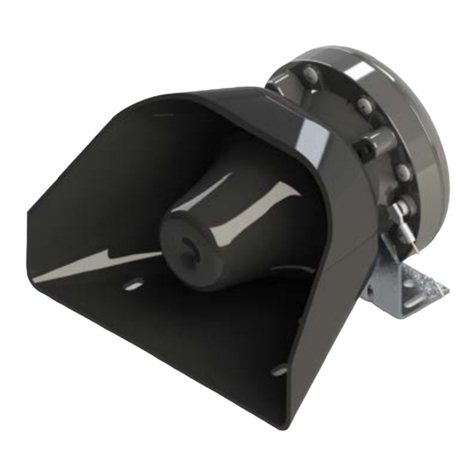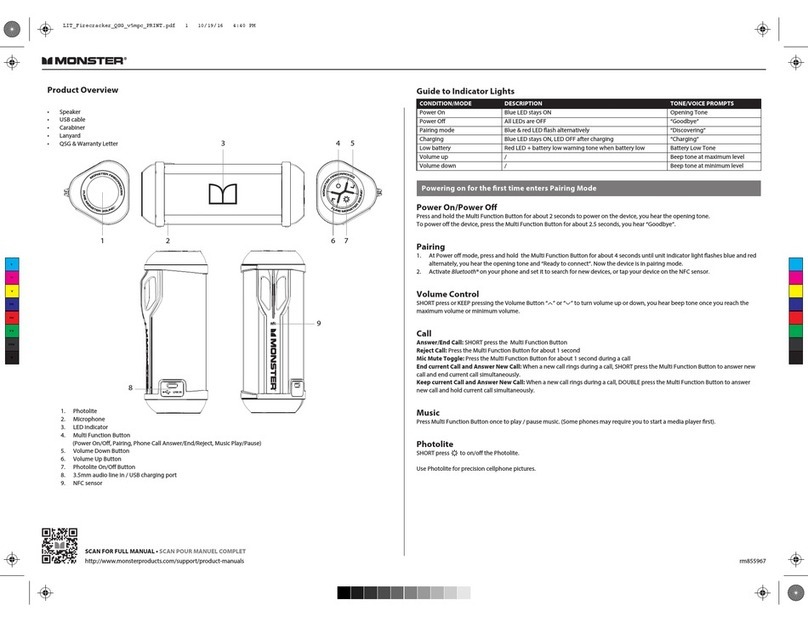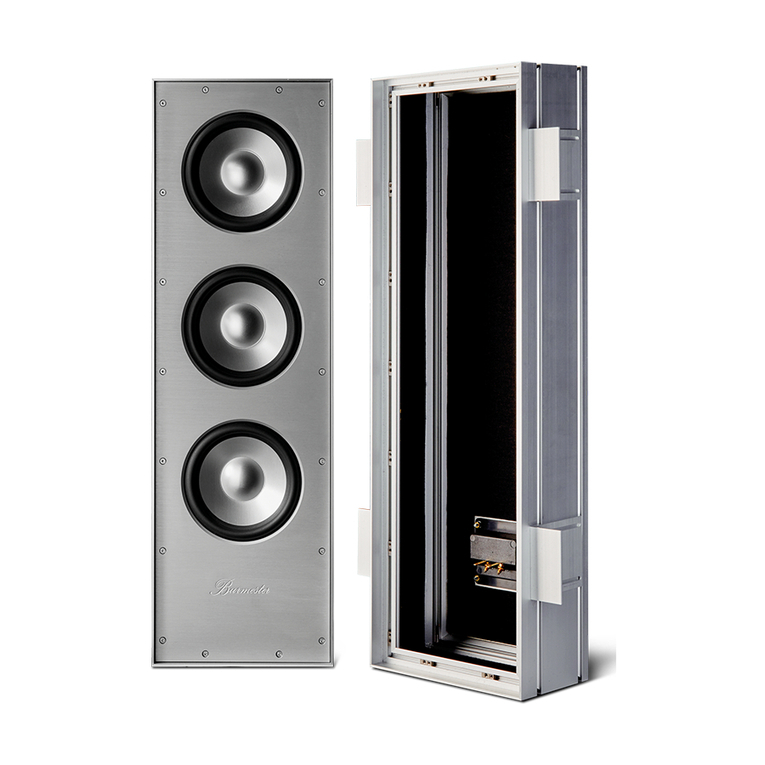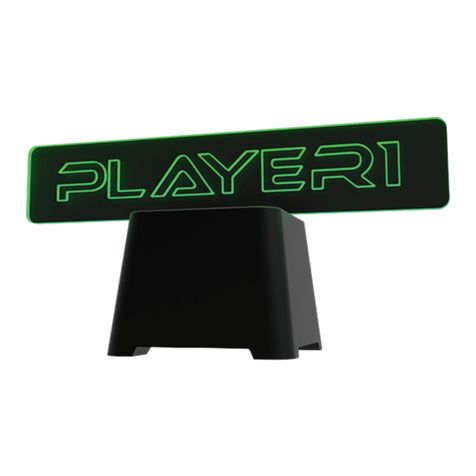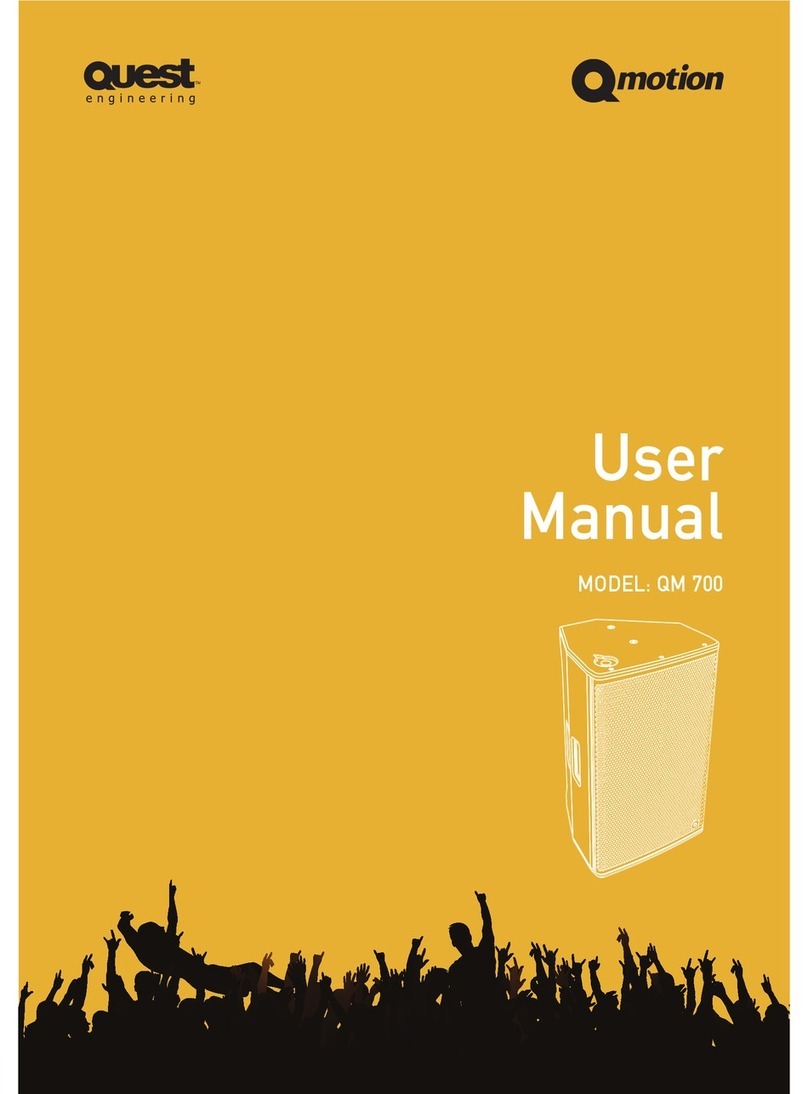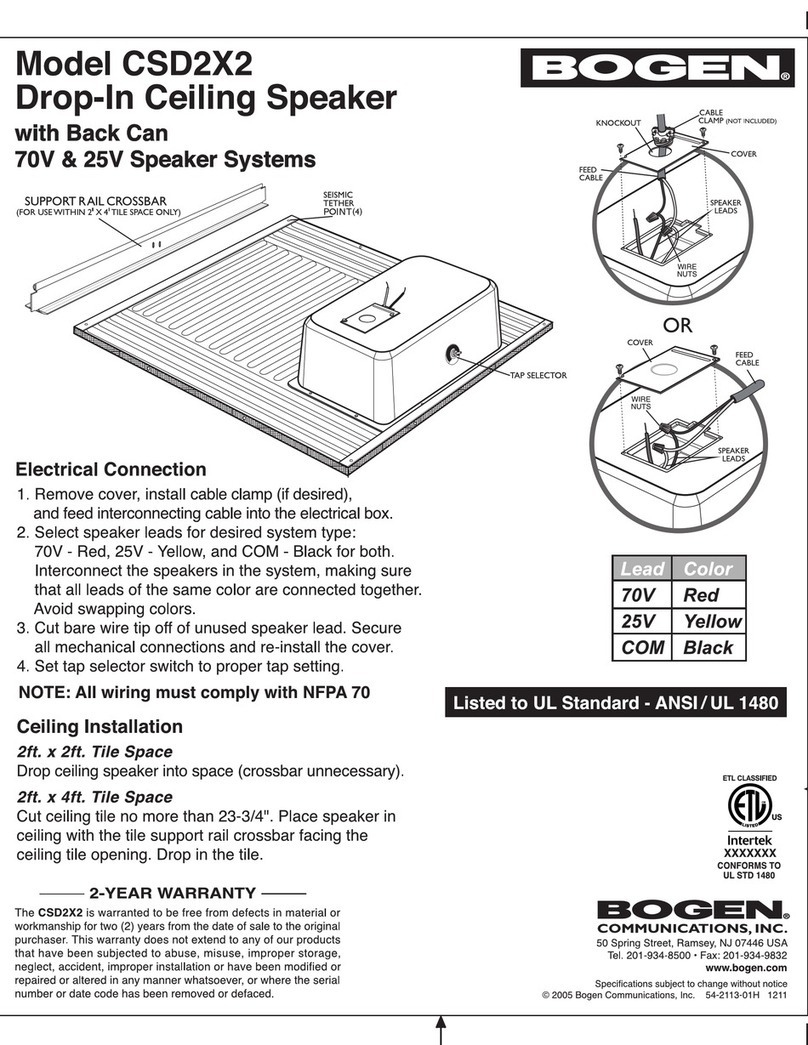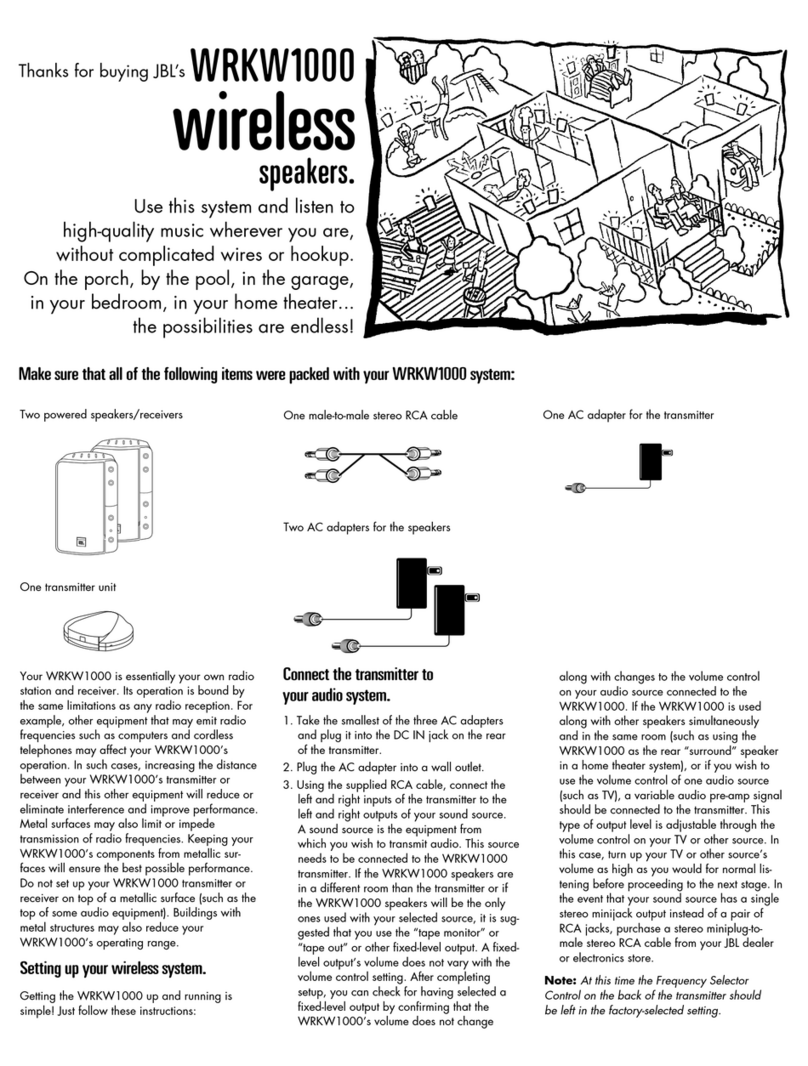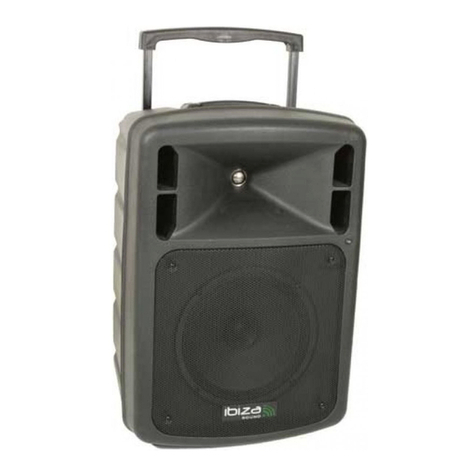neostein neo3 User manual

installation guide
neo3
DRAFT
DRAFT

neo3 install guide
Contents
How does it work? . . . . . . . . . . . . . 3
Loudspeaker Protection . . . . . . . . . . 3
Key Features . . . . . . . . . . . . . . . . . 4
What’s in the box . . . . . . . . . . . . . . 5
Construction Variations . . . . . . . . . . 6
Glossary and Terms . . . . . . . . . . . . . 7
System Specification . . . . . . . . . . . . 9
Sound dispersion . . . . . . . . . . . . . . 11
Loudspeaker Spacing . . . . . . . . . . 12
Installation . . . . . . . . . . . . . . . . . 17
Run Cable � � � � � � � � � � � � � � � 18
Insulation � � � � � � � � � � � � � � � 19
Close Ceiling � � � � � � � � � � � � � 20
Cut Speaker Hole � � � � � � � � � � � 21
Install Mounting Strips � � � � � � � 22
Connect Speaker � � � � � � � � � � 23
Attach Speaker � � � � � � � � � � � � 24
Loudspeaker Testing � � � � � � � � 25
Edge Fill � � � � � � � � � � � � � � � � 26
Mesh Scrim Tape � � � � � � � � � � 27
Full Wet Skim Coat � � � � � � � � � 28
Patch Plaster � � � � � � � � � � � � � 29
Fully Dry Plaster � � � � � � � � � � � 30
Paint / Decorate � � � � � � � � � � � � 31
Neo3 Specification . . . . . . . . . . . . 32
Troubleshooting . . . . . . . . . . . . . 33
Warranty Information . . . . . . . . . . 34
Contact . . . . . . . . . . . . . . . . . . . 35
DRAFT
DRAFT

1
neo3 install guide
How Does it Work?
Neostein invisible loudspeakers are designed to be
installed into your wall or ceiling and then fully covered
with 2mm plaster� The entire wall or ceiling can then
be painted or wallpapered as normal, giving incredible
acoustic performance with zero visual impact�
Neo3 invisible loudspeaker uses a flat-panel system that
creates sound through a series of micro-vibrations across
its panel surface� The complex vibrational mechanics
of the speaker create an incredibly immersive sound
field, with a true 360º dispersion pattern across all
frequencies� This means that you can enjoy the same
great sound quality from the speaker, no matter where
you are stood in the room� No more hot or cold spots,
and no more need for speaker toe-in, everyone is in the
sweet spot!
It is worth remembering that while Neostein creates
great sounding invisible loudspeakers, the product itself
is only a small part of the total system� The loudspeaker
itself becomes part of the fabric of the room, replacing
a section of your wall or ceiling� Part loudspeaker, part
construction material� As such, it is important that the
speaker is installed correctly as per this installation
guide� Failure to do so may result in undesirable
performance�
Loudspeaker Protection
Neostein is committed to creating loudspeakers that not
only sound great, but are also incredibly easy to install
and will provide years of solid performance� Neo3 has
some unique features to ensure everything works as it
is meant to without issue� One such feature is built-in
overload protection� A resettable thermal fuse kicks in
to protect the speaker when the amplifier is turned up
too loud� Simply turn the amplifier down and the fuse
will return the sound to a safe level� While the fuse will
provide protection from most accidental overloads, it
will not protect the speaker from repeated mistreatment
such as deliberately driving it too hard or using an
amplifier that is excessively powerful for the speaker�
For a great sounding and long-lasting system, Neostein
recommends turning off all amplifiers before making
or changing any connections within the system�
This includes any speaker cables, amplifier inputs, or
anything that may introduce high power spikes to be
sent to the loudspeaker� It is also recommended to use
a stable power-supply, ideally with surge protection or
even a filtered uninterrupted power supply if possible�
Failure to correctly install the
loudspeaker, or mistreatment of the
system may result in damage to the
loudspeaker that is not covered under
warranty.
DRAFT
DRAFT

2
neo3 install guide
Key Features
Front Panel
Plastering Guide
Sprung Speaker Terminals
Mounting Tabs
DRAFT
DRAFT

3
neo3 install guide
What’s in the Box
Part Name Quantity
ANeo3 Loudspeaker 1
BDrywall Screw 8
CPlywood Mounting Strip 2
A B C
DRAFT
DRAFT

4
neo3 install guide
Construction Variations
Neostein loudspeakers are designed to be installed in
internal stud walls and ceilings� It is not recommended
to install Neostein loudspeakers into solid block-work�
Ceilings
With wide sound dispersion characteristics, Neo3 makes
for a perfect ceiling speaker� Most frame and board
ceilings (joists with plasterboard/sheet-rock) work
incredibly well as long as they have a minimum cavity
depth of approximately 40mm behind the board� It is
recommended that ceiling cavities include insulation
material (mineral wool)� Insulation material helps
to prevent potentially unwanted cavity resonances
(resulting in a ‘boomy’ sound from the speaker) as well
as providing a soft surface for speaker cables to rest on,
preventing rattles and buzzes�
Timber frame ceilings will typically be the easiest
to install into, however both metal frame (MF) and
suspended ceilings can work well with additional
care� With any ceiling construction, it is important to
minimise loose debris on the rear of the ceiling board,
and ensure that all board is adequately and firmly
screwed to the joists� MF and suspended ceilings should
have extra care taken during construction to make sure
that all channels, hangers, straps and angle sections are
thoroughly secured with great care� Failure to create
a rigidly tied together ceiling may result in audible
buzzing or resonance once the loudspeaker is installed�
Walls
As with ceilings, great results can be achieved with most
internal wall types, with both timber and metal framed
walls working well where there is a minimum cavity
depth of approximately 40mm behind the wall board� It
is recommended to include soft insulation material such
as mineral wool in the wall cavity� This helps to control
potential cavity resonances�
Metal frame walls can work well for Neostein
installations, however additional care should be taken to
ensure all studs and footings are secured adequately to
prevent potential rattling or buzzing once the speaker is
installed�
It is not recommended to install Neostein loudspeakers
in partition walls or walls constructed from solid block-
work�
Neostein loudspeakers should never be
installed outdoors, or in external walls/
ceilings.
DRAFT
DRAFT

5
neo3 install guide
Glossary and Terms
Plaster
Gypsum-based plaster is used to cover the loudspeaker
once installed� Sometimes referred to as mud or skim,
plaster can be applied either as a patch finish for dryline
applications or a full skim coat� Joint compounds
may also be used instead of plaster coatings, this can
be effective for both patch-plaster finishes in dryline
construction as well as patch-plastering a loudspeaker
that has been retro-fitted into an existing wall or ceiling
that has already received a full skim-coat� Lime based
plasters, stucco (light texture internal), plaster of Paris,
porous acoustic plaster and other speciality finishes may
be used with caution� For more information, contact
your Neostein dealer or distributor�
Plasterboard
Most plasterboard consists of a gypsum based core
with paper skins� Often referred to as drywall, sheet-
rock or wall-board, plasterboard comes in a variety
of compositions offering different performance
characteristics� Neostein speakers work well with the
majority of plasterboard types including high density
sound-block board, fire board (Neostein loudspeakers
are not fire rated, any breach in fire board will create
ineffective protection) and water resistant board (much
like fire board, any breach in water resistant board will
impact its efficacy)� For information on installations
using specialist plasterboard construction, contact your
Neostein dealer�
Skim coat/Patch Plaster
Neostein loudspeakers were designed for use in ceilings
and walls receiving a full 2mm skim-coat of plaster
(meaning the entire wall or ceiling is covered in a thin
layer of plaster), however a patch-plaster approach
works equally as well for dryline construction (taped and
filled joints between boards without a full wet plaster
skim)� A patch plaster finish should be 2mm thick over
the loudspeaker and then feather out gradually to the
surrounding surface� Lightweight joint-compounds can
be used for patch-plastering�
Stud Wall/Ceiling
Stud walls/ceiling construction refers to a wall or ceiling
that is constructed using a timber or metal frame, with
plasterboard rigidly attached to it using drywall screws�
Ceiling frames often use joists, but can also use metal
channel section for a more lightweight structure� For
the purpose of this guide, it is assumed that installation
will always be into a stud wall or ceiling� Exact internal
construction is not critical for the purpose of installation
other than additional considerations when using metal
framework (see section on Construction Variations for
more information)�
DRAFT
DRAFT

6
neo3 install guide
Joint Tape
Neostein recommends use of self-adhesive mesh
scrim tape rather than paper joint tape� Mesh scrim
allows joint compound and plaster to set around the
tape, giving additional reinforcement surrounding
the loudspeaker� Self adhesive mesh scrim tape may
be applied immediately prior to plastering, or can be
adhered to the speaker while joint compound is still wet
during joint-filling stage of installation�
Amplification and Cabling
All Neostein loudspeakers are passive devices, and
therefore require external amplification in order to work�
Most audio amplifiers used for home-audio application
will work effectively, however care should be taken to
ensure that the amplifier can effectively handle a 4
Ohm load and is not excessively over-powered for the
loudspeaker� Integrated amplifiers, audio video receivers
(AVR’s), multi-room and multi-channel amplifiers all
typically work well� Some very low powered or budget
amplifiers may not be the best choice for your Neostein
loudspeakers as they can often have high levels of
distortion or fail to power the speakers adequately� Cable
should be run from the amplifier to the loudspeaker
location prior to installation for the sake of ease� Neostein
recommends the used of double-insulated stranded
loudspeaker cable for use in installation (no thicker than
8GA or 3�5mm diameter core)� For more information
on appropriate amplification or cabling, contact your
Neostein distributor�
Wiring
It is generally recommended that each loudspeaker
should be wired to its own amplifier channel, however it
is also possible to wire Neostein loudspeakers in series or
series-parallel configurations, however it is critical that
total impedance load is suitable for the amplifier being
used� If series or series-parallel wiring is to be used, it is
always recommended to make these connections at
the amplifier and not in-ceiling� This helps with speaker
testing, future upgrade and alternative configuration of
the system in the future�
Testing
Every single Neostein loudspeaker should be fully tested
during installation� It is not adequate to simply
play a burst of music as this will only check that
correct connections have been made, rather than
identifying any potential construction or installation
issues that may otherwise be difficult to rectify�
A full tone sweep should be used to identify any
potential rattles and buzzes in the system prior
to any plasterwork being undertaken� For more
information refer to the section of this guide on
testing or contact your Neostein distributor�
DRAFT
DRAFT

7
neo3 install guide
System Specification
Neostein loudspeakers can be used in place of all
‘traditional’ installed speakers for use in multi-room,
surround sound, distributed audio, media room,
background music and many other configurations�
Loudspeaker placement will often be dictated by
the performance requirements of the system, and all
industry standards and conventions should be adhered
to when positioning loudspeakers (for example angles
and locations for speakers in a surround sound system)�
There are however a number of advantages of
using an invisible loudspeaker beyond the obvious
aesthetic advantage� With full 360º coverage, Neostein
loudspeakers work incredibly well as ceiling-speakers for
background music systems in open plan living spaces
as sound is evenly spread in all directions� They also
provide incredible immersive results for surround sound
systems, especially when used for surround or height
channels� Experience a full Dolby Atmos system without
a single speaker in sight! Due to their wide dispersion
pattern, great results may be achieved with fully in-
ceiling surround sound systems� This can be helpful
where it is not possible to install speakers into the walls
due to design or construction limitations (exposed brick
walls, decorative wall panels etc�)�
Speaker Spacing
For background music or other distributed audio
systems where an even soundfield is required across a
large listening area, it is important to specify the correct
number of loudspeakers and space them accordingly to
give great results� This is especially important in open-
plan living spaces as well as commercial premises such
as bars, restaurants or retail spaces�
See the provided speaker spacing guide for suggested
arrangements in ceilings�
High Ceilings
While Neostein loudspeakers work well in large spaces,
installing speakers in extremely high ceilings may give
a very diffuse soundfield� There is no exact cut-off in
maximum ceiling height as factors such as interior finish
and decor as well as system performance requirements
can play a large role in the specification process� With
this in mind, Neostein recommends that installations
in ceilings above 5m are avoided where possible� In
spaces with high ceilings, it may be preferable to install
speakers in the walls at a height close to 2�4m-3m
from floor level (if this will provide accurate coverage
across the centre of the room)� For more information on
potential loudspeaker placement, please contact your
Neostein distributor�
Acoustically Reflective Spaces
Not only do Neostein loudspeakers have a wide
dispersion pattern, but they also have an incoherent-
phase characteristic� While this may sound like a
negative thing, it can be incredibly beneficial in
acoustically harsh environments with lots of hard
surfaces such as marble or tiled flooring� Due to the
use of micro-vibrations in the panel surface, sound
DRAFT
DRAFT

8
neo3 install guide
is emitted from an infinite number of points on the
speakers surface simultaneously� This complex waveform
is unlike that created by a conventional loudspeaker,
but is interpreted by our brains as ‘correct’ and therefore
sounds great, despite being complex� Where this really
helps out is in reflective rooms, with lots of acoustic
reflections� A conventional loudspeaker would have
difficulty reproducing sound clearly in such a space
without introduction of phase cancellation and comb
filtering issues from the relationship between direct
and reflected sounds� With Neostein loudspeakers, the
incoherent-phase sound signal does not interact with
reflections in a perceivably negative way� This means
that intelligibility and clarity are retained as well as
minimising hot and cold spots throughout the space�
Wet Rooms
When fully installed, plastered over and painted
adequately, Neostein loudspeakers are as waterproof
as the wall or ceiling into which they are installed�
This means that they work perfectly in wet rooms
such as bathrooms, shower rooms, swimming pool
areas and gyms� It is not recommended to use
Neostein loudspeakers where water will be continually
sprayed onto them (such as inside a shower cubicle,
or underwater!) but they will provide great sound if
positioned in a wet-room ceiling�
Surround Sound
An ideal solution for multi-channel audio systems,
Neostein unlocks the potential to have a fully immersive
surround sound system in a room such as a living
space, bedroom, bathroom or even a dedicated media
room� Either used for the entire surround system, or
to supplement traditional ‘front’ speakers, Neostein
speakers can create a huge sound with invisible rear and
height channels with zero aesthetic or design impact�
A fully in-ceiling surround sound system can give
incredible results� Without the visual cue of a traditional
speaker box, our brains are easily fooled into thinking
that the sound is coming from the screen (or behind us)
when in fact all speakers are installed in-ceiling�
With full 360º dispersion characteristics, a Neostein
surround system is truly immersive� Sound fills the
room effectively and effortlessly, putting the listener
in the centre of the action� Perfect for height channels
in a Dolby Atmos system� With their wide dispersion
pattern, there is no need to ‘toe-in’ the loudspeakers,
meaning that everyone in the room receives great
sound no matter where they are sat� No more fighting
for the sweet spot! While Neostein speakers offer full
dispersion, it is still important to place the loudspeakers
in accordance with system recommendations and
conventions such as horizontal and vertical angles from
the listening position� For more information on creating
an incredibly immersive surround sound system, contact
your Neostein distributor�
DRAFT
DRAFT

9
neo3 install guide
Sound Dispersion
Conventional loudspeaker
designs have one major flaw,
they have non-linear dispersion
characteristics� This means that
as frequency increases, typically
dispersion angle decreases� This
‘beaming’ of sound means the
speaker may sound great while
you are directly underneath
it, but as you walk throughout
the room you may notice that
high frequencies start to roll off�
To counteract this change in
tonality, more loudspeakers are
specified to maintain consistent
frequency response�
Neostein loudspeakers do not
display the same dispersion
characteristic� They in fact
disperse sound equally at all
frequencies� This means that
while sound will get quieter
as you move away from the
loudspeaker (as it does with all
sound sources), it will not change
tonally� You can typically use 2 to
4 times less loudspeakers within
a space than you would need
with a conventional loudspeaker
system to achieve the same
coverage�
Conventional Loudspeaker (frequency range of intelligibility)
Neostein Loudspeaker (frequency range of intelligibility)
DRAFT
DRAFT

10
neo3 install guide
Loudspeaker Spacing
For loudspeaker spacing in ceilings below 5m� Spacing
provided for either 0dB, 3dB or 6dB variation in SPL
across the listening space� Please contact your Neostein
distributor for more information or assistance on
correct loudspeaker positioning within residential
and commercial sound systems� Please note that this
table uses a simplified model and should be used as
a guideline only� Room reflections, materials, ceiling
topology, additional phase interaction from multiple
speakers etc� are all removed from the model as these
variables require advanced acoustic modelling rather
than a simple look-up table� These figures should
however give a great starting point for your speaker
spacing distances within large open plan rooms�
Loudspeaker Spacing for Stated Variation in SPL
0dB SPL Variation 3dB SPL Variation 6dB SPL Variation
Ceiling Height
(m)
Sitting
(1m)
Standing
(1.6m)
Sitting
(1m)
Standing
(1.6m)
Sitting
(1m)
Standing
(1.6m)
2.4 2�80 1�60 4�85 2�77 7�38 4�22
2.6 3�19 2�00 5�54 3�46 8�43 5�27
2.8 3�59 2�40 6�24 4�16 9�49 6�32
33�99 2�80 6�93 4�85 10�54 7�38
3.2 4�39 3�19 7�62 5�54 11�59 8�43
3.4 4�79 3�59 8�31 6�24 12�65 9�49
3.6 5�19 3�99 9�01 6�93 13�70 10�54
3.8 5�59 4�39 9�70 7�62 14�76 11�59
45�99 4�79 10�39 8�31 15�81 12�65
4.2 6�39 5�19 11�09 9�01 16�86 13�70
4.4 6�79 5�59 11�78 9�70 17�92 14�76
4.6 7�19 5�99 12�47 10�39 18�97 15�81
4.8 7�59 6�39 13�16 11�09 20�03 16�86
57�99 6�79 13�86 11�78 21�08 17�92
DRAFT
DRAFT

11
neo3 install guide
Standing (1.6m)
Sitting (1m)
Ceiling Height
0dB Reference
ΔdB (Standing)
Loudspeaker Spacing
Neostein recommends using spacing for ‘standing’ in
spaces where listeners are both sitting and standing
such as bars, or entertaining spaces�
DRAFT
DRAFT

12
neo3 install guide
Environment
It is critical that the construction site is sealed from the
elements with all glazing fitted, and is temperature
stable before installation of Neostein loudspeakers�
Maximum recommended humidity of RH50%, and at a
stable temperature of at least 16ºC (61ºF)�
Tools
For installation of Neostein invisible loudspeakers, you
will require the following tools:
•Pencil
•Measuring tape
•Masking tape/stapler
•Sharp knife (box-cutter/retractable knife)
•Drywall saw
•Screwdriver
•Low powered amplifier for testing
•Phone or other tone generator
For filling/plastering you will also need the following
tools:
•Joint filler or compound
•Mixing container
•Water
•Jointing/filling knife
•Mesh scrim joint tape
•Sharp knife
Safety and Precautions
Electrical
No attempt should be made to install this
product within existing building structures
unless you are certain that no electric
cables, water pipes, gas pipes or supporting
joists will be cut through�
Fire Protection
When making an intrusion into an
internal wall or ceiling to install a Neostein
loudspeaker, be sure to check the
appropriate regulations pertaining to the
required fire rating� Depending on the
location of the intrusion and the applicable
regulations it may be necessary to build in
or install additional fire rated components
or products to enclose the speaker�
Neostein take no responsibility for the
correct specification and installation of any
such fire protection system that is required
behind their loudspeakers�
Speaker Protection
Neostein loudspeakers include built in
passive protection circuits� This helps
ensure the loudspeaker operates reliably
for many years ahead, by limiting and
DRAFT
DRAFT

13
neo3 install guide
protecting against temporary excessive
audio signals that could damage the
product� Common sense should always
prevail though� Your product should never
be operated at repeated or consistently
excessive audio levels� Never operate your
Neostein speakers at a level where audio
reproduction appears distorted�
For ultimate protection, Neostein
recommends using amplifiers with digital
signal processing (specifically voltage/
current limiting) to drive the loudspeaker
as this will help prevent unwanted and
excessive electrical energy from reaching
the speaker whilst allowing it to perform at
it’s best at all times�
Metal Frame Ceilings
When installing in metal frame (MF)
ceilings (& walls), please ensure the
assembled metal frame is fully solid,
secure and that all metal mating joints are
mechanically fixed or bonded together�
Metal joints that are not tightly fixed have
the potential to generate spurious buzzing
noises as the two free edges rub against
each other when activated by the acoustic
energy generated by the
Neostein loudspeaker� All debris, loose
screws, excess materials etc�, should be
removed from above the ceiling to avoid
unwanted rattles�
Cleanliness During Installation
Always install the speaker when the general
environment is clean and dust free� Keep
each speaker protected in its shipping
carton until cutting work is complete and
the installation room has been cleaned
down thoroughly� Never expose the
loudspeaker to an environment containing
airborne metallic particles and dust, as
these will be attracted to the speakers high
power magnet, potentially causing damage
to the loudspeaker�
Other Considerations
•Install Neo3 in a cool, dry, clean place away from
direct sunlight, cold bridges and heat sources, strong
vibrational forces, chemical fumes, dust and moisture
(steam)�
•Do not expose the speaker to sudden temperature
changes or locate it in an environment with high
humidity� This is to prevent condensation forming
inside, which may cause damage to the product�
•Only clean the product using a clean, dry or damp
cloth� Do not use solvents as this may cause damage�
•Ensure that all installation mounting surfaces are
able to support the weight of the product and any
mounting accessories�
DRAFT
DRAFT

14
neo3 install guide
•Avoid pushing on the wall or ceiling surface
immediately in front of the speaker� Excessive
excursion can crack the plaster or damage the
loudspeaker�
•Do not attempt to modify or repair the product�
Contact your distributor if a fault should occur�
•When plastering over, ensure only 2mm of
material covers the product� More than this will
degrade the performance of the product and
could lead to product failure�
•Avoid using silicone sealants within the area
of the loudspeaker� Sublimation of silicone will
deposit a thin layer of material on the panel
surface, severely degrading the ability of plaster
to bond�
•Prior to plastering, wipe the front panel surface
clean with a damp cloth� Do not use solvents�
•This product should not be used with single
thick-coat plaster or with other finishing
methods that take days (rather than hours) to dry
out�
•Please be aware that when this product is fitted
in simple (stud or rafter with plasterboard/
floorboard attached on either side) stud walls
or ceilings, vibrational energy is inevitably
transferred into the building structure� This
energy can travel for some considerable distance
up, down and along the structure� It is therefore
recommended the product be fitted within
acoustically isolated stud walls or ceilings where
possible� Special care should be taken when
installing into multi-occupancy buildings�
•Completed and fully dried plaster surfaces should
be finished with permeable coatings/materials,
to allow moisture in that coating to dry into the
environment, rather than trap moisture in the
speaker�
•During installation take care to use appropriate
and suitable joint filling compounds to fill the
gap between speaker and the surrounding
surface� This gap should be no less than 2mm
and no more than 5mm in width� Inappropriate
compounds used in such a joint can shrink, crack
excessively and lose strength� Allow the joint to
dry thoroughly before applying surface skim
coats� Failure to do so could create a very slight
embossed outline in the finished and decorated
surface�
•As a general rule, any drying process should be
gradual rather than forced otherwise materials
can lose strength and can crack�
•Neostein takes no responsibility for inappropriate
use of materials and environmental conditions
under which they are applied�
DRAFT
DRAFT

15
neo3 install guide
Installation
Installation is simple, but should only be attempted by
professional building trades, with plaster work being
carried out by professional plasterers�
Neostein loudspeakers should be mounted into a wall
or ceiling using the correct mounting strips supplied
with the speaker� If these become lost or damaged,
offcuts of wood or timber studs or sheet material (not
plasterboard) may be used in their place� Take care
when handling the product prior to installation� If the
mounting tabs become bent or damaged, this may
cause rattling or buzzing once installed�
Check that your carton contains the correct number of
items - a single speaker, mounting strips and drywall
screws�
Retain this Installation Guide� If you pass the unit on to a
third party make sure you pass on the Installation Guide�
Installation Variations
This guide explains installation process for Neostein
loudspeakers installed into simple stud/rafter walls
or ceilings with plasterboard skins� The loudspeaker
is secured to the wall or ceiling using mounting tabs
on the ends of the loudspeaker� Mounting strips are
provided, these are first screwed to the rear of the
plasterboard, giving the provided drywall screws
material in to which they can securely grip� The
loudspeaker may be installed into walls and ceilings that
have double skin plasterboard, or any standard thickness
of board� If ceiling build up is not long enough for the
provided drywall screws to fully penetrate and grip into
the rear mounting strips, appropriate (longer) screws
should be sourced� It is recommended to use stainless
steel drywall screws to mount the loudspeaker to the
wall/ceiling� Do not install the loudspeaker without
screwing into a mounting strip or solid backing material�
Plywood / Particle Board Backing
Where plasterboard has been placed on top of a
plywood or particle board backing such as oriented
strand board (OSB), it may not be required to use the
supplied mounting strips� If you have any questions
regarding use of the mounting strips, contact your
Neostein distributor�
Patch Plastering
While Neostein loudspeakers have been designed to
be used with a full wet plaster skim coat of 2mm, it
is also possible to patch-plaster the speaker� This is
recommended where the ceiling or wall will not receive
a full plaster skim coat itself� A 2mm coat of filler/joint
compound should be applied over the loudspeaker, with
its thickness gradually reducing from the perimeter out
to at least 0�5m (20”) away from the speaker� Feathering
out and sanding smooth the surface will result in an
invisible finish much like a fully plastered loudspeaker�
This is shown briefly during installation instructions,
however, for more information contact your distributor�
DRAFT
DRAFT

16
neo3 install guide
Run Cable
Pre-run cabling to speaker
locations, making sure cable
will not rest on the rear of the
plasterboard once ceiling is
hung�
Neostein recommends using
double-insulated stranded
loudspeaker cable with a
maximum thickness of 8GA
or 3�5mm diameter� 12GA -
14GA (2mm - 2�5mm) core
recommended�
Take the opportunity to double
check ceiling construction/
layout, ensuring that there is no
conflict of space once ceiling
is closed� It is helpful to take a
photo of the ceiling layout at this
stage for reference if needed�
It is not recommended to wire
speakers in series or series-
parallel within the ceiling cavity
itself� If the system calls for
this kind of wiring, Neostein
recommend making these
connections at the rack and not
in the ceiling�
DRAFT
DRAFT

17
neo3 install guide
Insulation
Neostein recommends using soft
insulation material within the
ceiling cavity where possible�
Insulation helps to reduce
potential cavity resonances
(may make your sound system
have uncontrolled low-mid
frequency performance, making
it sound ‘boomy’ or ‘boxy’)� It also
helps to prevent debris or cable
from accidentally resting on
the back of the loudspeaker or
surrounding plasterboard, which
may cause audible rattles or
buzzing�
Insulation material also has
the added benefit of helping
to control sound transference�
It is worth noting that using
insulation material alone is
unlikely to completely prevent
sound transference into adjacent
spaces� For more information
on reducing potential sound
transmission issues contact your
Neostein distributor�
DRAFT
DRAFT

18
neo3 install guide
Close Ceiling
Hang all ceiling board to
close the ceiling� Neostein
recommends using additional
drywall screws in the area
immediately surrounding the
speaker� This helps to ensure that
the plasterboard is fully secured
to the framework, reducing the
likelihood of potential rattles or
buzzes�
It is critical that the rear of the
ceiling board is kept clean and
free of debris as it is hung� Spare
screws, cable, cut off waste
plasterboard sections etc� should
all be removed from the rear of
the ceiling� All cabling should
be tied up off the surface of the
plasterboard� Soft insulation may
be used to create a barrier or
protective layer on the rear of the
ceiling board�
DRAFT
DRAFT
Table of contents
